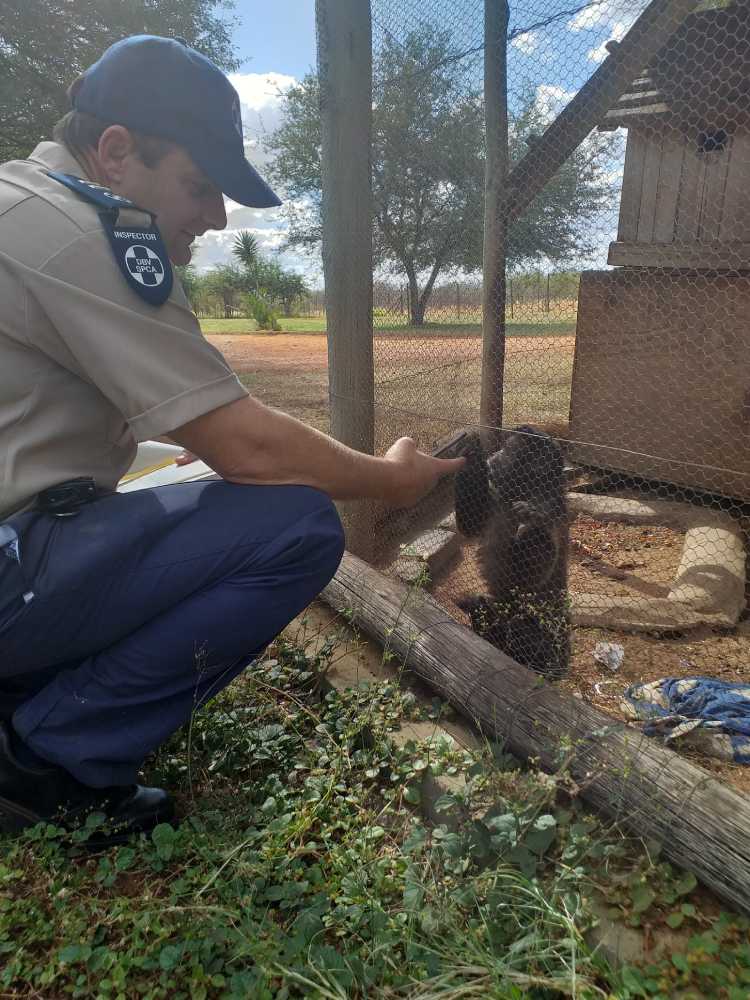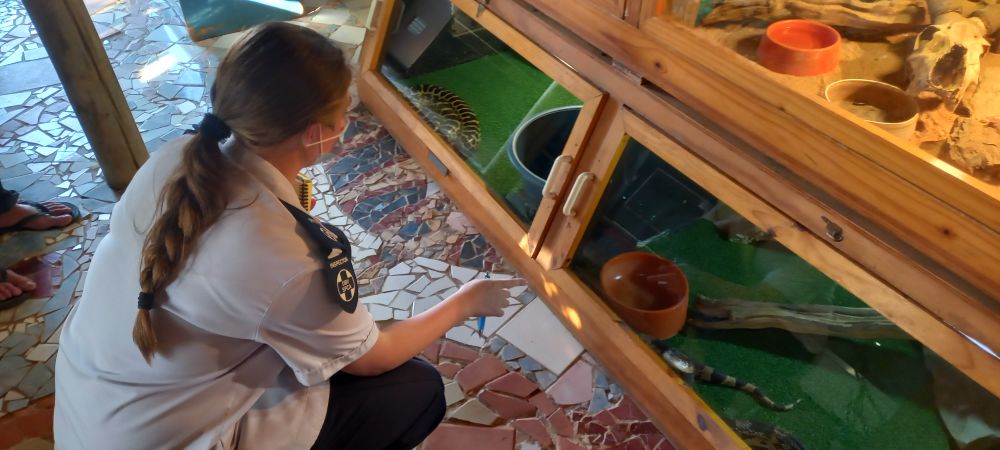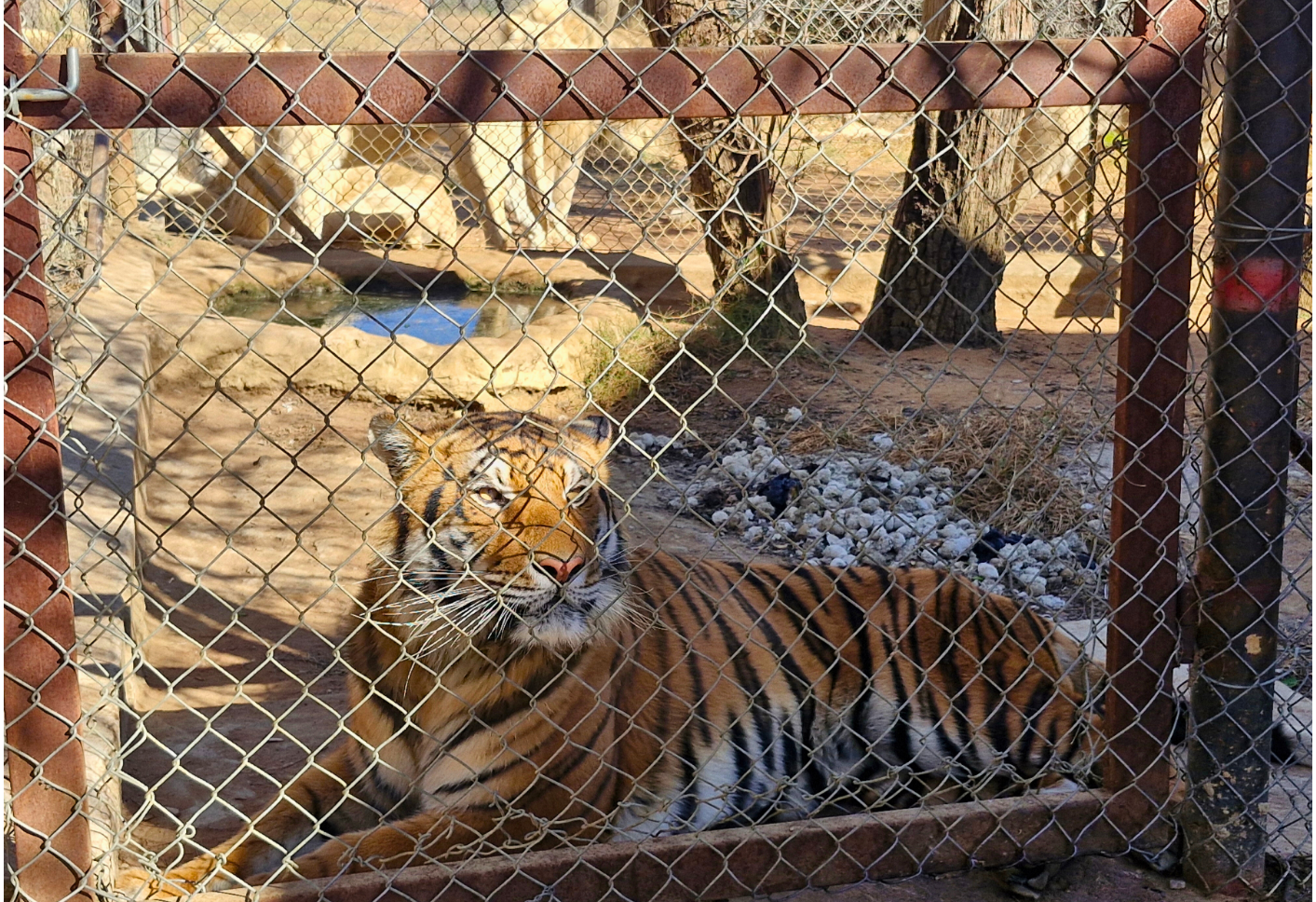
The NSPCA remains steadfastly opposed to exotic animals being kept as pets or in captivity. There are very few facilities or individuals that can fully mimic the life an exotic animal would have in its natural environment. Where there is no legitimate conservation purpose for keeping exotics, which include animals such as Chinchillas’, Degus, Iguanas to Coatis and Tigers, the animals should be left to live a natural life in its natural habitat in its country of origin. The NSPCA constantly seeks to work within the parameters set by Nature Conservation entities when it comes to exotic animals and the threat to our own indigenous wildlife.
In addition to the NSPCA carrying out pet shop inspections of their own, the Unit, trains and guides Inspectors across the country to carry out pet shop inspections and assists with new exotic species requirements where necessary.
In Gauteng tigers being kept as pets in residential areas where there is simply no way that these creatures can experience all the freedoms associated with their own environment in the wild – One Health and the 5 Freedoms all speak to the same aspect. A threat to the residents should an escape occur as well as threats from zoonosis (diseases transmitted from animal to human) as well as zooanthroponosis (diseases transmitted from man to animal) are realities in these situations.
The NSPCA is currently seeking to work with local municipalities to prevent the on-going importation and abuse of exotic animals in across South Africa. We believe the Department of Forestry, Fisheries and the Environment (DFFE) should be far stricter in the control of exotic animals into this country, especially where CITES appendix 1 animals are concerned, unless there is a true, scientific call for such and wherein the welfare of each individual animals, being it a mammal, reptile or insect is assessed prior to an import permit being issued. We commend provincial nature conservation entities that have taken a hard stance on the importation of exotic animals into there area of operation. This includes needing a permit to import, keep and trade in exotic wildlife.
Ferrets are well known for the significant destruction on indigenous species and are escape artists. Husbandry of these animal is on the majority of cases poor as they do not take into account the animal’s natural behaviours and that they would naturally be more nocturnal when they would usually be hunting.

Indigenous Wildlife as Pets
Any indigenous animals being held in captivity require a permit from the local provincial nature conservation body to be kept as a pet or for show. The NSPCA acts not only in terms of the Animals Protection Act 71 of 1962 in all cases, but where any animal is on exhibit by a private individual or company, they must also comply with the provisions of the Performing Animals Protection Act 24 of 1935 (PAPA) as amended.
The permits issued by any Nature Conservation permitting official and a license issued by an official from the Department of Agriculture, Land Reform and Rural Development (DALRRD) in terms of the PAPA, cannot be issued without the official taking due consideration of the animals’ welfare. This outcome is aligned with the High Court Ruling – NSPCA vs DEA (CASE No: 86515/2017) wherein Judge Kollapen, justifiably ruled that conservation and animal welfare are intertwined values. In this, one cannot exist without the other.
Our work has seen indigenous animals being kept in horrific conditions. For example, a Caracal being kept in a 18m2 enclosure as a pet where the enclosure would fail dismally when considering the animals needs and in cases like this, there is no conservation value in keeping the cat.
We have come across leopards being housed together in areas less than 50m2. There are vast welfare concerns within this scenario such as, a mostly solitary cat in conditions that forces the cats to be housed together in a very small area. A male leopard’s natural territory may be anywhere from 3100 hectares to over 7000 hectares1. One health, the five freedoms, and the 5 domain models of animal welfare cannot be complied within these situations. Not only are the models not adhered to, but in most cases, the APA is also contravened.

No captive facility outside of a game reserve or where these cats may remain untouched can match the requirements they truly need. Environmental enrichment is critical for wildlife in captivity and is an often neglected aspect of keeping.
Multiple focus areas of the NSPCA’s Wildlife Protection Unit have been in place and inter-linked. With the illegal keeping of indigenous wildlife, the most common species that are illegally kept are Tortoises. As reptiles, they have very specific needs when considering diet, shelter, and husbandry. The demand for tortoises as pets has inherent links to the trafficking and hawking of these reptiles, including chameleons.
1. Reference for Leopard: Leopard – SANBI
Related Articles and News
Conviction for Bethal Resident After Dog Found in Fatal Condition
The National Council of SPCAs (NSPCA) commends the conviction and sentencing of Alarice Megan Smith, found guilty of cruelty to animals in the Bethal Magistrates’ Court. Ms Smith [...]
NSPCA Notes DA’s Refusal to Provide Information
The Democratic Alliance (DA) has refused the disclosure of information and documentation relating to the proposing of Minister Aucamp to the Department of Forestry, Fisheries and the Environment, in [...]
High Court Slams Restrictions on NSPCA and Restores Full Investigative Powers on Live Export Vessels
The National Council of SPCAs (NSPCA) welcomes a landmark judgment delivered today by the Eastern Cape Division of the High Court in Makhanda, which decisively strengthens our authority to [...]




